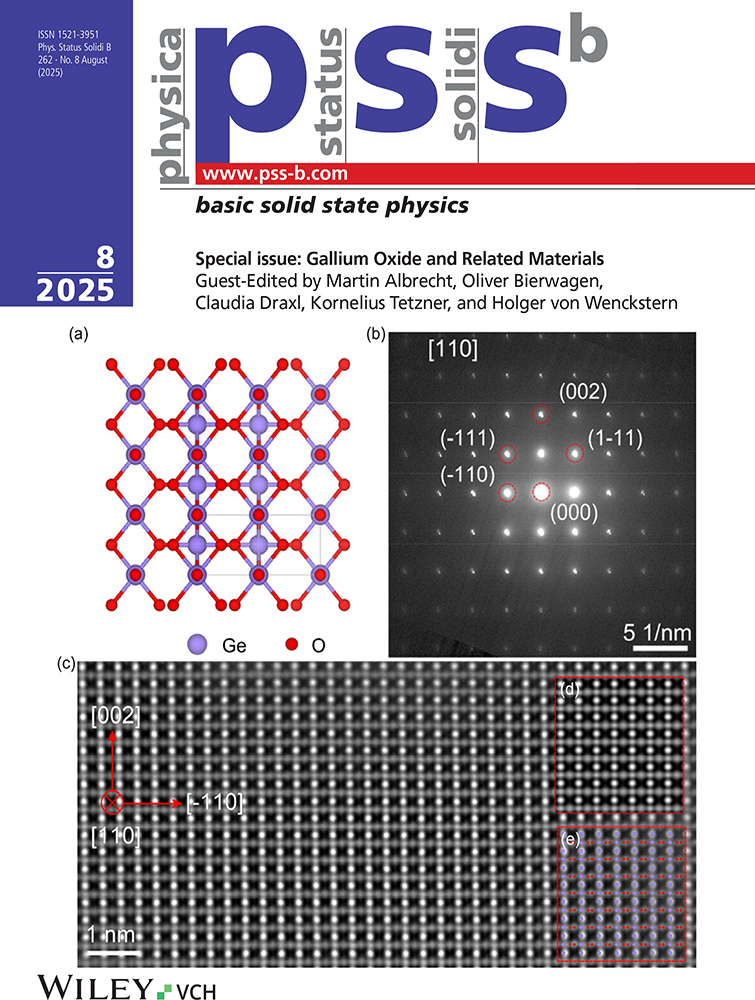Studies of the Oscillator Strengths of Infrared Vibrational Modes in Glow-Discharge Hydrogenated Amorphous Silicon
Edinburgh EH144AS, Great Britain.
Abstract
enThe infrared oscillator strengths of the stretching and wagging/rocking modes in glow-discharge hydrogenated amorphous silicon, a-Si, is compared to similar data reported recently for sputtered material. For both materials the integrated band intensity of the wagging/rocking mode at 640 cm−1 is proportional to the total hydrogen concentration, NH and is independent of preparation conditions. The derived oscillator strength for the latter mode is identical in glow-discharge and sputtered a-Si films. In contrast, the integrated band intensity of the composite silicon-hydrogen stretching mode is film dependent; the derived average oscillator strength, Γs (2000 + 2100), is significantly smaller in glow-discharge, compared to sputtered a-Si. A reanalysis of previous isothermal dehydrogenation data is presented in which Γs (2000 + 2100) is shown to be a function of NH and increases markedly at hydrogen contents < 10 at%. No conclusions can be drawn, however, concerning the oscillator strengths of the deconvoluted bands at 2000 and 2100 cm−1 occurring within the stretching region. A previously proposed model for the mechanism of the dehydrogenation of a-Si is unaffected by the present results.
Abstract
deDie Infrarot-Oszillatorstärken der „Stretching”︁- und „Wagging/Rocking-Moden”︁ in hydrogenisiertem amorphem Silizium, a-Si, das durch Glimmentladung hergestellt wurde, werden mit ähnlichen Werten verglichen, die kürzlich für gesputtertes Material berichtet wurden. Für beide Materialien ist die integrierte Bandenintensität der „Wagging/Rocking”︁-Mode bei 640 cm−1 proportional zur gesamten Wasserstoffkonzentration, NH, und unabhängig von den Präparationsbedingungen. Die abgeleitete Oszillatorstärke für letztere Mode ist identisch in a-Si-Schichten, die sowohl durch Sputtern als auch durch Glimmentladung hergestellt werden. Im Gegensatz dazu ist die integrierte Bandenintensität der kombinierten Silizium-Wasserstoff „Stretching”︁-Mode schichtabhängig; die abgeleitete mittlere Oszillatorstärke, Γs (2000 + 2100) ist beträchtlich geringer in Glimmentladungs-a-Si verglichen mit gesputtertem a-Si. Eine erneute Analyse früherer isothermer Dehydrogenisierungswerte wird durchgeführt, in der gezeigt wird, daß Γs (2000 + 2100) eine Funktion von NH ist und bei Wasserstoffkonzentrationen < 10 At% merklich ansteigt. Jedoch lassen sich keine Schlüsse bezüglich der Oszillatorstärken in den entfalteten Banden bei 2000 und 2100 cm−1 ziehen, die innerhalb des „Stretching”︁-Bereichs auftreten. Ein früher vorgeschlagenes Modell für den Mechanismus der Dehydrogenisierung von a-Si wird von den vorgelegten Ergebnissen nicht beeinflußt.




